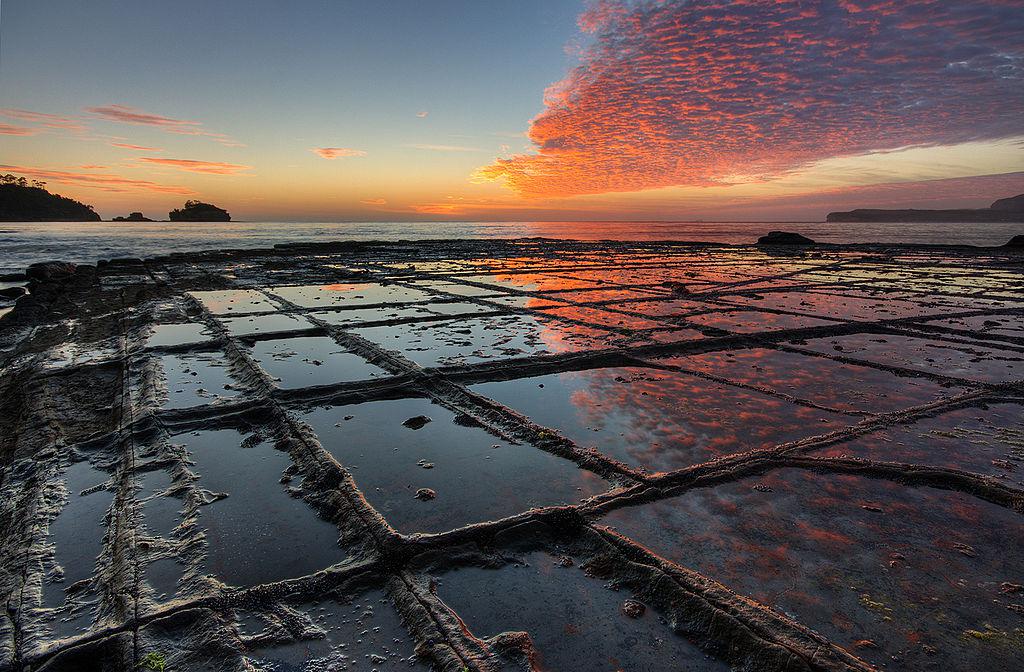Atlas Obscura on Slate is a blog about the world’s hidden wonders. Like us on Facebook and Tumblr, or follow us on Twitter.
Looking down onto the siltstone platforms on the Eaglehawk Neck isthmus in Tasmania, Australia, is like peering through an airplane window onto a grid of fields and roads. The rows of rectangles—each of which is a shade of brown, or green if covered by moss—appear too neat to have been made by nature. But humans played no part in their construction.
The crisscrossed rock is a geological formation known as “tessellated pavement” for its resemblance to Roman mosaic floors of the same name. The Eaglehawk Neck formation began when pressure at the Earth’s crust caused cracks to appear in the rock at perpendicular angles. That happened, if you’ll pardon the vague estimate, around 60 million to 160 million years ago. Salt water has since eroded the areas between the lines, giving the joints an enhanced appearance and creating a tiled effect.
Tessellated pavement is found in only a few places on Earth. Bimini Road, an underwater rock formation in the Bahamas featuring neat blocks of limestone, caused much argument following its discovery in 1968. Geological consensus is that the road is a naturally occurring tessellated pavement, but the folk at self-described “pop archeology site” Ancient Origins—as well as some scientists, according to the Epoch Times—posit that Bimini Road is a human-built remnant of Atlantis.
Visit Atlas Obscura for more on Eaglehawk Neck and Bimini Road.

More geological oddities around the world:
